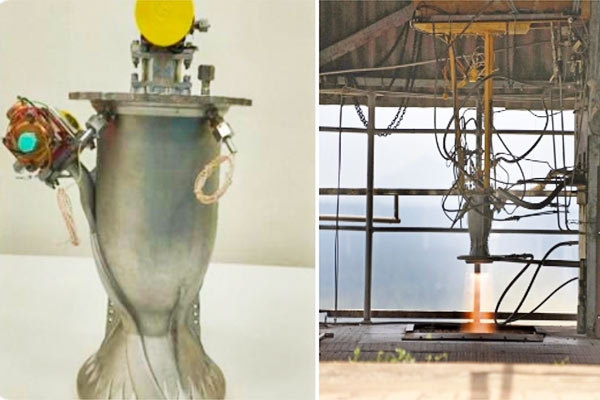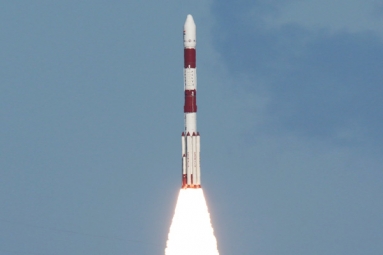
(Image source from: Twitter.com/isro)
The Indian Space Research Organization (ISRO) achieved a major breakthrough on Thursday by successfully testing a liquid rocket engine made using additive manufacturing technology. According to the space agency, the test lasted 665 seconds and used the PS4 engine on the upper stage of the Polar Satellite Launch Vehicle (PSLV). This rocket is ISRO's "flagship product" and has a long history of sending satellites to low-altitude areas. Earth orbit. The PS4 engine, traditionally manufactured through machining and welding, is critical to powering the fourth stage of the PSLV rocket and has a vacuum thrust of 7.33 kN. The PS4 engine plays an important role in precisely delivering the payload to the intended path in the PSLV. Space agencies are now increasingly using it as a reliable orbital platform for a variety of missions.
Design & Manufacturing Breakthrough:
— ISRO (@isro) May 10, 2024
ISRO successfully conducts a long-duration test of the PS4 engine, re-designed for production using cutting-edge additive manufacturing techniques and crafted in the Indian industry.
The new engine, now a single piece, saves 97% of raw… pic.twitter.com/YdDsDm3YGF
The same engine is also used in the PSLV first stage reaction control system (PS1). Developed by the Liquid Propulsion Systems Center (LPSC), a division of ISRO, the engine runs on a combination of two ground-storable fuels and pumps tetroxide as the oxidizer and monomethyl hydrazine as the fuel. ISRO has redesigned the PS4 engine using laser powder substrate fusion technology. This has significant benefits including:
• The number of engine parts has been reduced from 14 to one.
• In addition, the new design eliminates 19 welded connections.
• This new design leads to significant savings in raw material consumption per engine.
• Specifically, the amount of metal powder used in the traditional manufacturing process is reduced from 13.7 kg in forging and sheet metal to 565 kg.
• Additionally, this redesign reduced the overall production time by 60%.
This engine is manufactured by the Indian company WIPRO 3D, which is part of the famous Wipro company. Founded in 2012, WIPRO 3D is a leading provider of metal additive manufacturing solutions and services. The engine was hot tested at the ISRO Propulsion Center in Mahendragiri. I will participate in the regular PSLV program.







